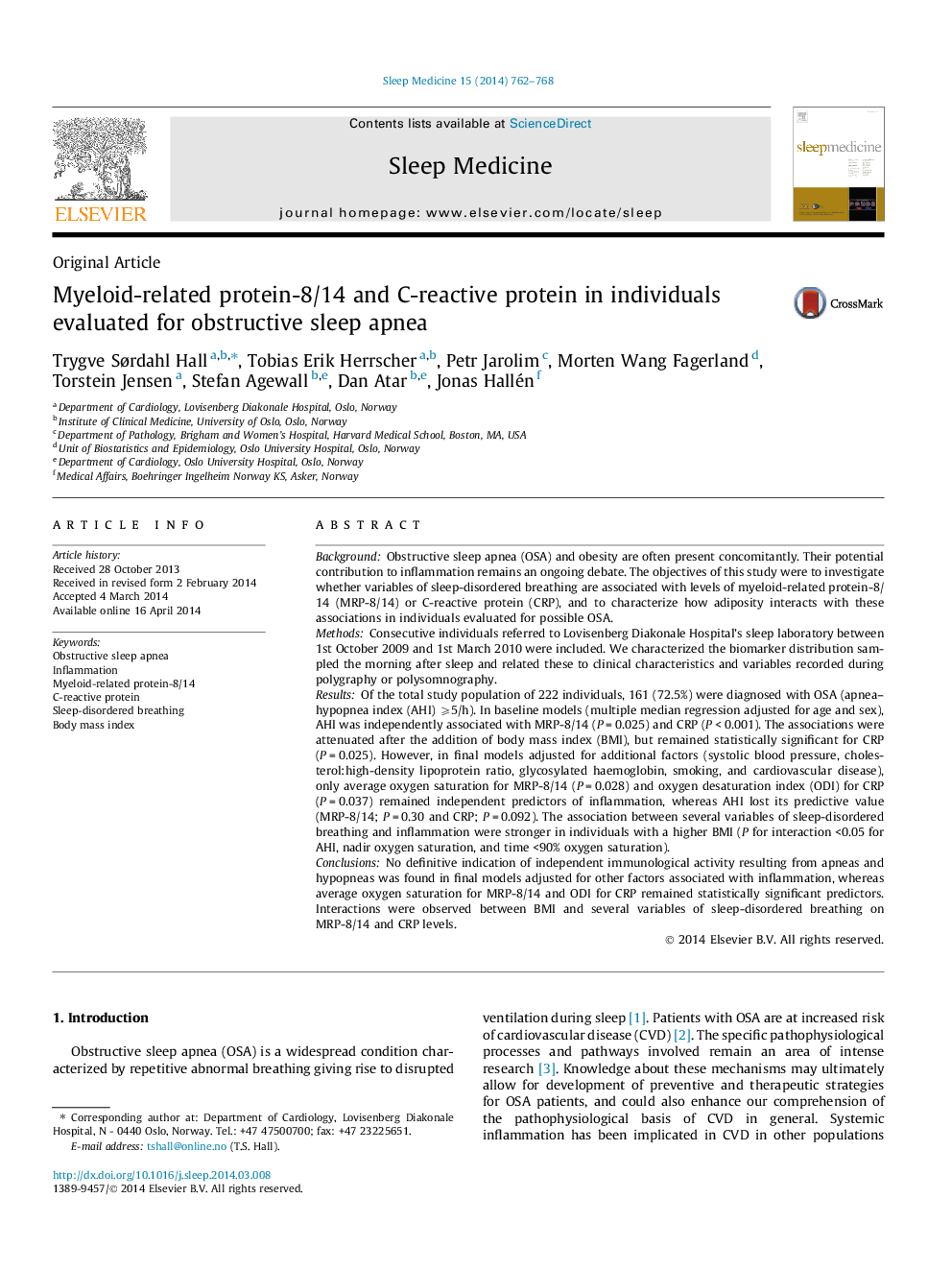| Article ID | Journal | Published Year | Pages | File Type |
|---|---|---|---|---|
| 3175887 | Sleep Medicine | 2014 | 7 Pages |
•We investigated if sleep-disordered breathing are associated with MRP-8/14 or CRP.•No association was found for AHI when adjusted for other factors in final models.•Average O2 sat. remained an independent predictor of MRP-8/14 and ODI of CRP.•Interactions were observed between BMI and several variables of sleep disordered breathing.
BackgroundObstructive sleep apnea (OSA) and obesity are often present concomitantly. Their potential contribution to inflammation remains an ongoing debate. The objectives of this study were to investigate whether variables of sleep-disordered breathing are associated with levels of myeloid-related protein-8/14 (MRP-8/14) or C-reactive protein (CRP), and to characterize how adiposity interacts with these associations in individuals evaluated for possible OSA.MethodsConsecutive individuals referred to Lovisenberg Diakonale Hospital’s sleep laboratory between 1st October 2009 and 1st March 2010 were included. We characterized the biomarker distribution sampled the morning after sleep and related these to clinical characteristics and variables recorded during polygraphy or polysomnography.ResultsOf the total study population of 222 individuals, 161 (72.5%) were diagnosed with OSA (apnea–hypopnea index (AHI) ⩾5/h). In baseline models (multiple median regression adjusted for age and sex), AHI was independently associated with MRP-8/14 (P = 0.025) and CRP (P < 0.001). The associations were attenuated after the addition of body mass index (BMI), but remained statistically significant for CRP (P = 0.025). However, in final models adjusted for additional factors (systolic blood pressure, cholesterol:high-density lipoprotein ratio, glycosylated haemoglobin, smoking, and cardiovascular disease), only average oxygen saturation for MRP-8/14 (P = 0.028) and oxygen desaturation index (ODI) for CRP (P = 0.037) remained independent predictors of inflammation, whereas AHI lost its predictive value (MRP-8/14; P = 0.30 and CRP; P = 0.092). The association between several variables of sleep-disordered breathing and inflammation were stronger in individuals with a higher BMI (P for interaction <0.05 for AHI, nadir oxygen saturation, and time <90% oxygen saturation).ConclusionsNo definitive indication of independent immunological activity resulting from apneas and hypopneas was found in final models adjusted for other factors associated with inflammation, whereas average oxygen saturation for MRP-8/14 and ODI for CRP remained statistically significant predictors. Interactions were observed between BMI and several variables of sleep-disordered breathing on MRP-8/14 and CRP levels.
